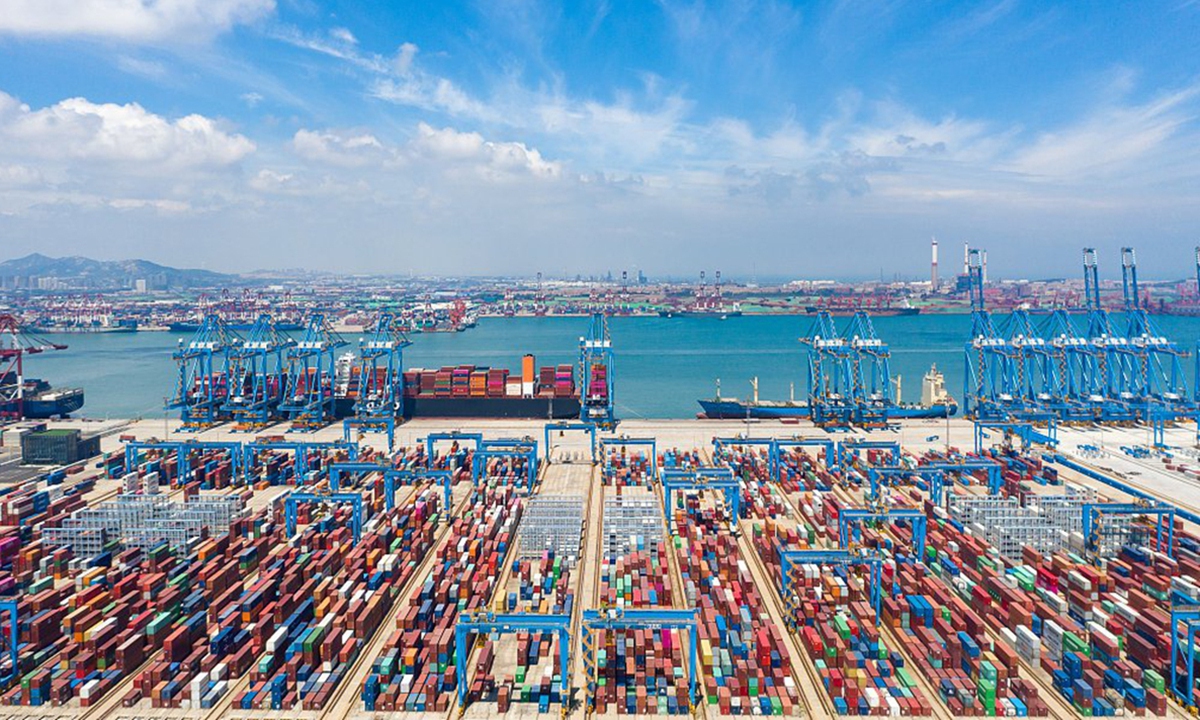
China trade economy File photo: VCG
The freight rate between Shanghai and the US East Coast roughly doubled in less than a month amid global inflation and the ongoing pressure from the Red Sea crisis.
High shipping rates show the resilient US demand for Chinese products, despite calls for decoupling and shipping disruptions, industry insiders said.
The cost of a 40-foot container sent from Shanghai to the US West Coast was $2,000 in late December; now, it has doubled. On the East Coast, the rate jumped from $3,600 to about $6,000, leading to container congestion, data that the Global Times received from the Shanghai International Shipping Institute showed on Tuesday.
"This surge can be attributed, in part, to the rush of Chinese exports to the US in response to demand before the Chinese New Year," Gao Yangjiang, general manager of Ningbo Rapid International Freight Agency Co, told the Global Times on Tuesday.
Additionally, the dry season in the Panama Canal is limiting its shipping capacity, contributing to high rates, Gao said.
The ongoing tension in the Red Sea is also an important cause of higher rates, as some Chinese goods destined for Europe need to be shipped from the US East Coast to bypass the Red Sea.
"The Red Sea crisis has driven up shipping costs and indirectly boosted freight rates to the US," Kang Shuchun, a director of the China Federation of Logistics and Purchasing, told the Global Times on Tuesday.
This is the peak time for trans-Pacific shipping, with rates expected to continue rising until the end of the month before the Chinese New Year holidays, Gao said.
The high cargo rates are also defying claims by some US media outlets of "weakened rates and demand on China-US trade."
Instead of going down, China-US rates have gone up. Moreover, the high shipping rates, while putting pressure on trade businesses, suggest that US demand for Chinese-made products remains resilient and strong, several industry insiders told the Global Times on Tuesday.
China-US trade has encountered strong headwinds amid sanctions and decoupling measures by the US government targeting China, its major trading partner.
Bilateral trade fell 11.6 percent year-on-year in US dollar terms in 2023, Chinese customs said on January 12, largely due to declines in global demand and US export sanctions continuing to impede US firms' exports to China, observers said.
"In terms of shipping volume and maritime trade, actual demand from the US for Chinese products has been resilient... US demand for Chinese products is always there. It's just that some Chinese factories are moving to some Asian countries to settle their businesses for cheaper labor costs," Wu Minghua, a veteran shipping analyst, told the Global Times.
As to the Red Sea crisis, "companies need to think about countermeasures in the short term, but the real test in the long term is the resilience of China's industrial chain," Kang said.
"We encourage domestic companies to diversify and optimize their export markets and reduce dependence on any single market," Kang said.




